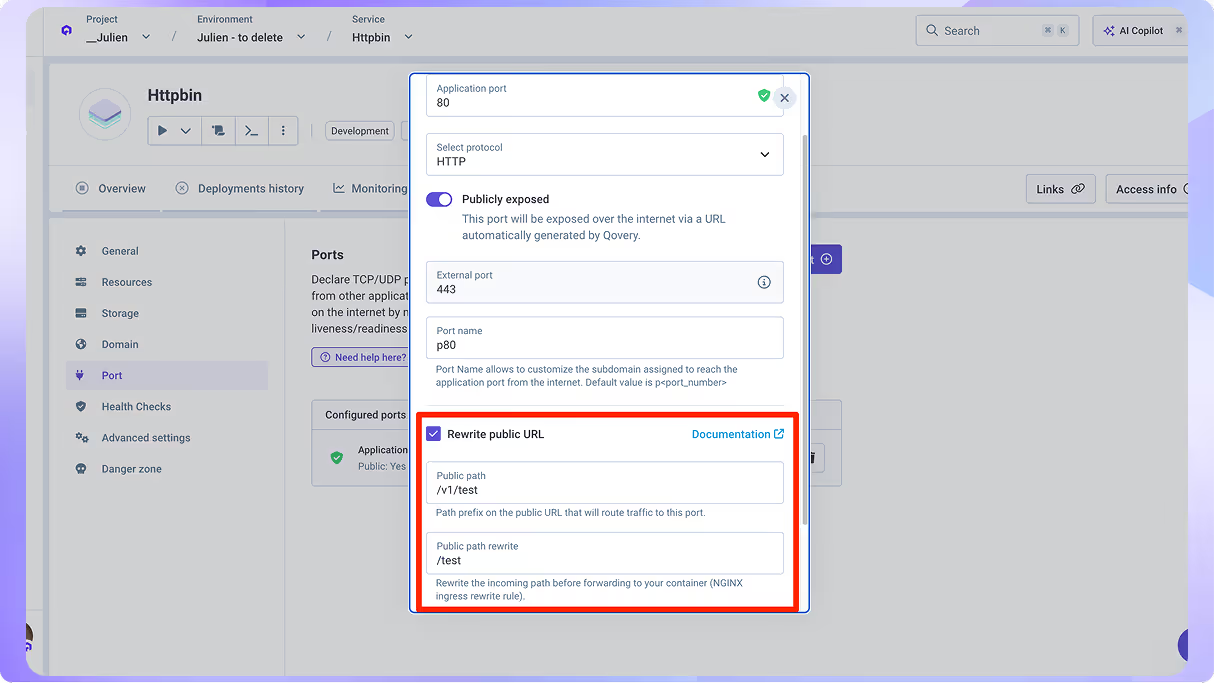Easy GPU setup, New Log filters, URL rewrite, Service deploy in CLI
Hello Team,
Check out this week’s changelog for exciting updates and enhancements from our team! 🚀
🚀 GPUs workloads the easy way
Running GPU workloads on EKS has never been easy, until now. With Qovery’s latest update, you can enable GPU nodes, configure GPU access, and optimize costs automatically, all without writing a single line of YAML or touching Helm charts. Qovery now handles everything behind the scenes so you can focus entirely on your applications.
Whether you’re training models, running inference pipelines, or powering compute-heavy workloads, Qovery makes GPU provisioning on an EKS cluster simple as that:
- Enable the GPUs on your cluster:
- Enable GPU node pools in your cluster settings
- Choose the instance types you need.
- Mix On-Demand and Spot instances for the best balance of cost and performance.
- Define limits on the number of GPUs that can be used overall by your cluster.
- Define GPU needs per application: specify how many GPUs your app requires. Qovery handles provisioning, scheduling, and placement for you.
Check-out the video below and the official announcement here!
🔍 Search and filter your application logs
Following the launch of Qovery Observe, we’re progressively adding new capabilities to help you better monitor, debug, and understand your applications. Today, we’re excited to announce a major improvement to the Logs experience: you can now search and filter directly within your application logs.
All Qovery users now have access to advanced log capabilities that make debugging and monitoring much smoother:
- Search for specific messages or patterns in your application logs
- Filter by time range to focus on a specific deployment or incident
- Filter by log level (error, info, debug, etc.) to surface only what matters
Whether you’re investigating an error spike, tracing a regression, or reviewing deployment behaviour, you can now do it all without leaving Qovery.
Check-out the video below and the official announcement here!
🌐 URL Rewrite for Exposed Services
Need more control over your routing? You can now rewrite URLs directly from the Qovery console.
This new feature allows you to modify the incoming request URL and redirect traffic to a different endpoint. For example, you can easily route requests from /v1/api to /api using the “Rewrite URL” option.

This gives you greater flexibility in how your services are exposed and handled, all without touching your code.
🛠️ Unified Deploy Command via CLI
We’ve simplified the Qovery CLI with a new unified command:
qovery service deploy
Whether you’re deploying a container, a Git repository, a Helm chart, or any supported service type, this single command will automatically detect and deploy the right service.
It’s perfect for streamlining your CI/CD pipeline, removing the need to use different commands for different service types.
Minor Changes:
- Qovery demo cluster Kubernetes version upgraded to 1.33
That’s all for this week! As always, we’d love to hear your feedback.
Happy Deploying,
The Qovery Team 🚀

.webp)



.svg)
.svg)
.svg)

